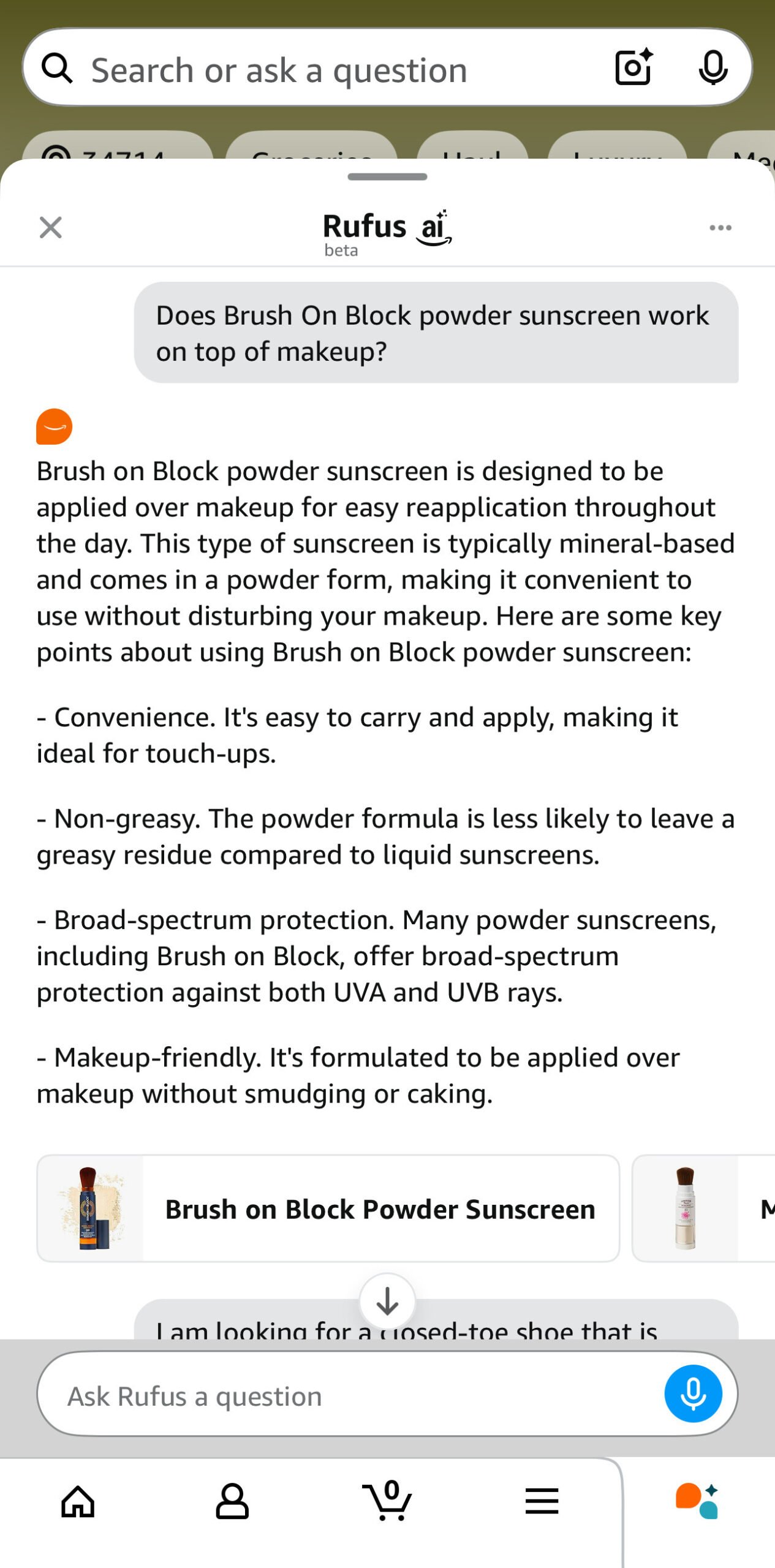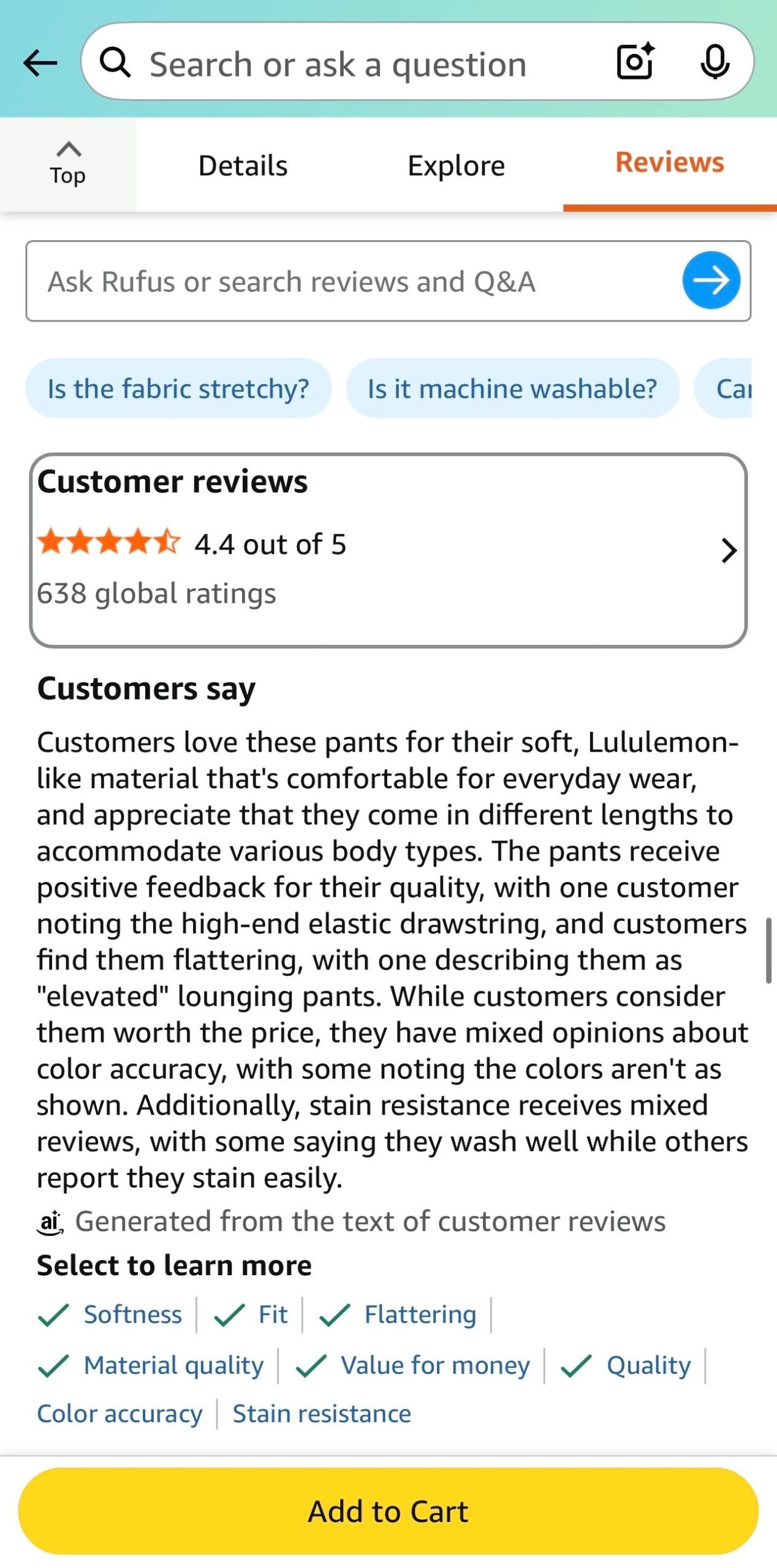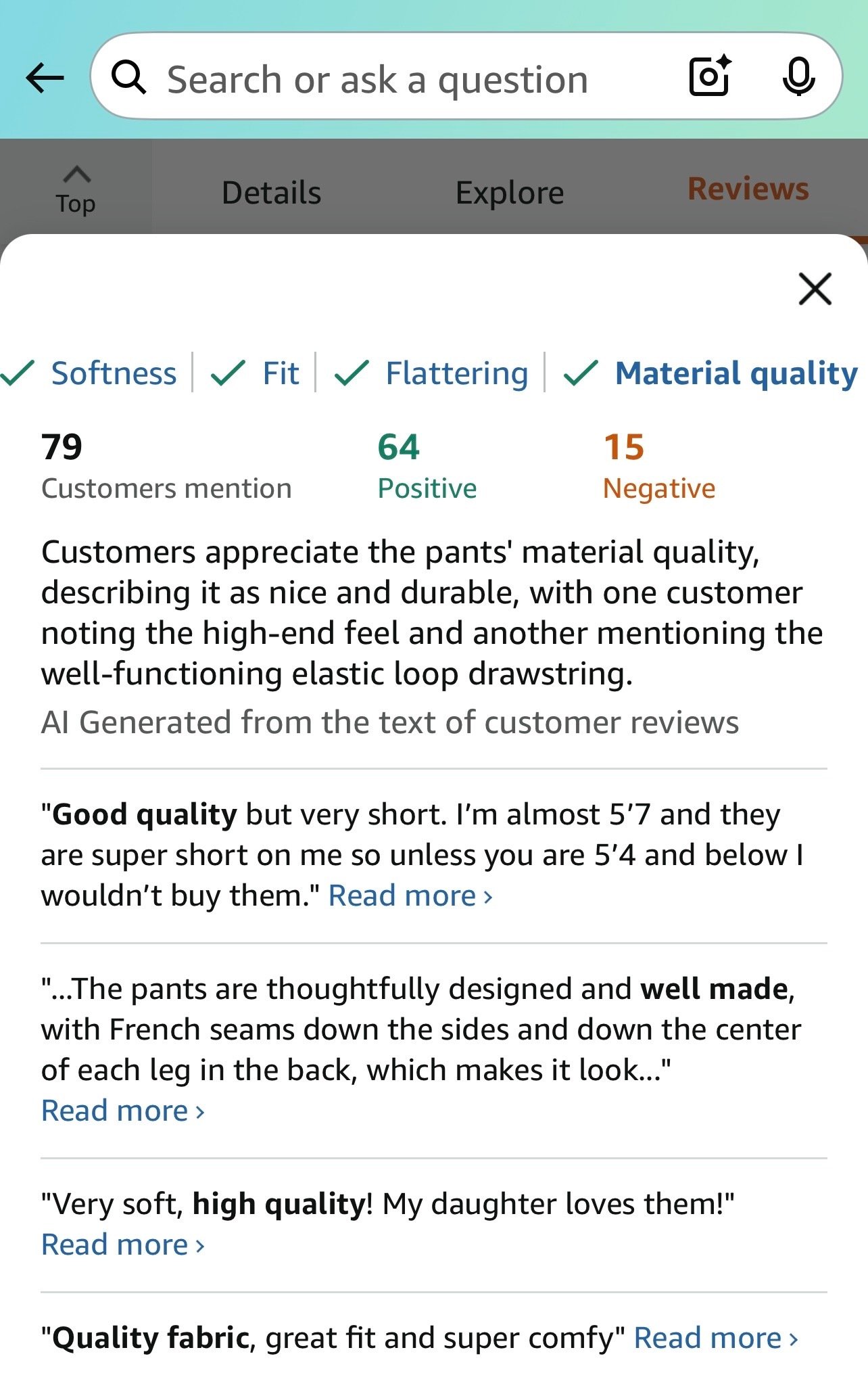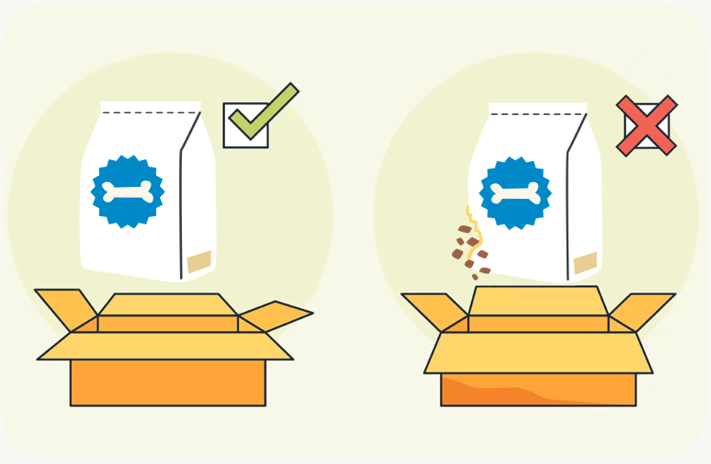Article
AI for Amazon Sellers: August 2025 Guide to Amazon Tools (Rufus, Amelia, Reviews, Generative AI Ads Content & More)
AI continues to grow rapidly, being implemented into tons of software tools and platforms that many of us already use – one of which is Amazon. This extensive artificial intelligence implementation is already transforming various aspects of the ecommerce platform.
In a few previous artificial intelligence resources, we explored other AI use cases for Amazon ecommerce sellers:
This article will serve more as an overview of how Amazon is implementing AI across the shopping experience, advertising, and seller tools, giving a comprehensive view of what Amazon’s increasing investment in AI means for a seller’s business & overall marketplace strategy. For each Amazon AI addition, we’ll explain what it is, how it works, whether it’s worth testing, and what it means for brands.
As Amazon has continued to implement more artificial intelligence tools to its platform, businesses must understand what these resources offer and whether an investment in testing/usage is worthwhile.
Amazon Rufus: AI Shopping Assistant
Amazon’s announcement of Rufus, its AI shopping assistant, is likely the most important artificial intelligence integration to the platform. Announced in early 2024, Rufus has quickly made an impact – for both sellers and consumers – since its launch.
The goal of adding Rufus was to help shoppers find product information, answer questions, and overall improve the shopping experience. It helps shoppers ask Rufus directly natural-language questions, compare products, and get recommendations from quickly analyzing information directly from live Amazon detail pages. Now, shoppers can simply ask Rufus a general question about a type of Amazon product, down to specific details on how a certain ASIN can be used. This artificial intelligence integration is one of the most impactful additions to the marketplace as it’s now shifting how consumers shop on the platform.
From a seller’s point of view, Rufus highlights the ever-growing need for detailed, explanatory product information across all detail pages. In fact, we now think of Rufus as a lever that impacts sales. Rufus has the power to tell a shopper “yes, this product fits your needs” or “no, here’s a different product that sounds more like what you’re looking for” based on your product page content. As a result, changes you make to your product page content should be considered in conjunction with Rufus, demonstrating a key AI use case in the Amazon ecommerce landscape.
Suggested Actions
- Build a habit of auditing your ASINs monthly for gaps in attributes or other product details.
- Include FAQs in your A+ Content to reinforce answers Rufus can cite.
How is Amazon Rufus AI Expanding?
In 2024, $164 billion worth of Amazon products were eligible for Rufus features and this is expected to reach $849.8 billion by 2027 while Rufus additionally expands to 13+ new global marketplaces in 2025, according to AI Track. This speaks to Amazon’s broader investment in AI and reiterates further that your product descriptions must be more detailed than ever to convince Rufus – and shoppers – that your products are worth purchasing.
AI-Summarized Amazon Product Reviews
Amazon now uses generative AI to summarize product reviews on detail pages. These Amazon AI review summaries reduce the time consumers needed for product research, speeding up the decision-making process by allowing shoppers to get a quick read on product quality without having to scroll through each review themselves.
These are some additional examples of generative AI implementations in the Amazon ecommerce landscape that have since enhanced the reviews process:
- Shoppers can click on specific features or filters within the AI summary to find personalized product reviews.
- The “shopper like me” filterers can be used to uncover reviews specific to relatable body sizes or other factors.
- Attribute callouts (eg: fit, noise level, battery life, material quality, etc.) can be selected to jump straight to what matters most to a given shopper.
Project Amelia: Amazon’s AI Assistant for Sellers
Project Amelia (renamed “Seller Assistant” at Amazon Accelerate 2025) is Amazon’s AI assistant for sellers. It launched to beta users in September 2024. Amazon’s Amelia AI is designed to streamline support, surface insights, discover missed opportunities, and help resolve issues faster, offering helpful capabilities to sellers.
Amelia AI on Amazon can:
- Answer natural-language questions about your account health and catalog
- Look into resolutions for common problems (eg: inventory issues)
- Provide summarizes of your sales by analyzing performance data
- Recommend actions to improve product performance.
Talk to Amazon’s Amelia AI the same way that a shopper would with Rufus; a potentially invaluable tool for Amazon FBA sellers’ operational support.
Amelia AI can be a helpful first pass tool when troubleshooting and for easier escalations of issues to Amazon directly, like case work, that typically slows FBA brands down. However, this also relates to the ongoing question of “is Amazon’s AI reliable?” These AI tools for Amazon sellers, like Amelia, represent a significant step forward, however, we still strongly recommend your Amazon team (whether in-house or an agency) is kept in the loop for consulting and tracking progress. In other words, treat Amelia as a co-pilot, not a pilot. Validate any suggested changes against your brand standards and compliance requirements.
AI-Generated Amazon Listing Content
Amazon offers additional generative AI tools for its ecommerce marketplace sellers, including the ability for brands to generate an entire product page with minimal information. Simply provide a prompt, URL, or spreadsheet with product attributes and Amazon will automatically generate the entire listing. From there, you can approve or regenerate the content as needed.
Is the AI-Generated Amazon Listing Content Tool Worth Using?
This AI tool may be efficient for first drafts to product page copywriting, but it can also produce generic language, miss your brand voice, or provide inaccurate claims about your products, raising potential concerns about the reliability of this new Amazon AI tool (especially in regards to generating content without human oversight). If you’re going to use it, we strongly recommend feeding the tool as much product information as you can upfront: exact specs, differentiators, real-world use cases, and certifications (if applicable). Then treat the output like a junior copywriter’s first draft, editing for brand voice, ensuring phrases are clear, and adjusting keywords for SEO visibility.
As a team that has perfected Amazon listings over the past 8+ years, we continue to prioritize a human approach that resonates with shoppers and matches language that makes sense for your audience. Explore our case studies to see real-world examples of Amazon listings we’ve created for various industries and reach out to our team for a conversation if looking for optimization assistance.
AI Creative Studio: Video, Images, & Audio for Amazon PPC
In late 2024, Amazon Ads launched Creative Studio, a suite of AI-powered tools to help advertisers excel on the marketplace. Brands can utilize these AI capabilities to produce on-brand product images, videos, and audio clips from existing assets, offering quick enhancements to Amazon PPC campaigns. Simply provide “a single product shot, product page, or existing ad creative” to generate new campaign creatives using Amazon AI videos, photos, or audio clips.
Videos take time & money to create, which is why many brands opt out of using them. But videos help capture consumers by visually explaining products in an attention-grabbing manner, making them an important investment. For brands that lack videos or lifestyle images, these Amazon AI video tools can serve as a starting point to quickly close that gap and get campaigns running sooner rather than later. The Amazon AI video generator can also be useful for seasonal creative refreshes or testing different product shot environments (eg: kitchen, gym, outdoors, etc.).
We’ve also seen that, especially in the past few years, shoppers have responded more to lifestyle visuals and videos as these formats easily capture attention on the crowded Amazon marketplace, further emphasizing the value of these new PPC AI features that generate such content and may help deploy campaigns faster. Plus, some ad types require videos which makes the Amazon AI video generator specifically more valuable to brands without those creative capabilities already at their disposal.
Additional Amazon Artificial Intelligence Investments
Amazon’s investment in AI extends beyond its marketplace, also investing heavily in robotics through its logistics network to ship faster, cheaper and with less issues.
- “Private Investigator” (P.I.) defect detection. Units pass through an imaging tunnel before shipping to customers; AI flags potential defects and diverts problematic units. Fewer defects should reduce returns and improve customer satisfaction, thanks to efficiencies brought by Amazon’s warehouse AI tools.
- Autonomous robots in warehouses. In-warehouse robots can now navigate environments without being required to work in fenced zones, directly relating to the advancements in Amazon’s warehouse AI improvements.
- AI-driven carrier scheduling. Automated scheduling speeds up back-and-forth communication on the logistics side.
These examples of artificial intelligence integrations and widespread Amazon implementation are also indirect benefits for sellers: quality control, delivery speed, and consistency. Better operations equal better Rufus AI conversations and customer reviews, leading to more accurate and influential (positive) summaries for shoppers.
Where is AI for Amazon Sellers Heading?
As we learned during the 2024 holiday season, shoppers are more open to AI-powered shopping tools than ever before with AI chat bots influencing $229 billion in global online holiday sales (23.5% of total holiday revenue). This significance demonstrates the growing impact and acceptance of artificial intelligence in ecommerce, likely influencing Amazon’s eagerness to launch the additional AI use cases we walked through in this article.
Although Amazon has already started to invest heavily in artificial intelligence, we’re sure that more AI-powered features will arise in the coming months and years, further showcasing the marketplace’s continued investment in the technology.
Despite this growing interest and trust in AI, we still encourage brands to leverage human oversight when depending on AI – especially when it relates to how their brand appears publicly and is interpreted by consumers – that is, until we (if ever) get to a point of being able to fully rely on Amazon’s AI tools.
If you would like to connect with our team of Amazon experts to discuss any of the tools mentioned in this article or explore what a partnership with Brandwoven looks like, reach out to us to schedule a consultation where we can discuss any challenges your brand is facing and walk through our customized approach to marketplace management, providing valuable artificial intelligence resources and expertise in how to leverage AI for Amazon sellers.




